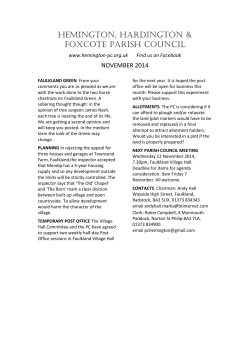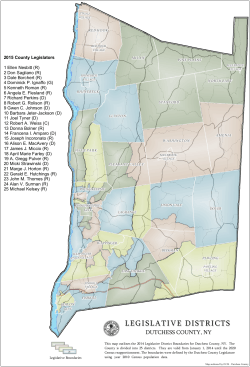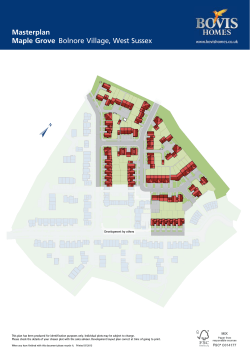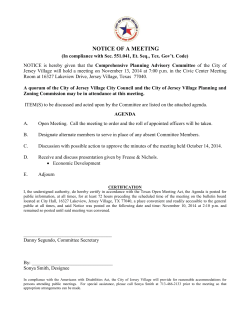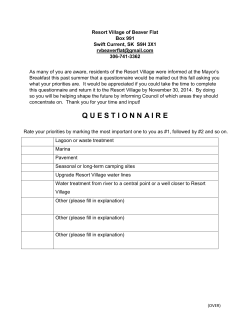
Tamil Nadu Village Habitations Improvement (THAI) Scheme
ABSTRACT Schemes – State Scheme – Tamil Nadu Village Habitations Improvement (THAI) Scheme – Implementation of Scheme - Prescribing guidelines for the year 2015-2016 and sanction of funds – Approved – Orders – Issued. Rural Development and Panchayat Raj (SGS-1) Department G.O.(Ms.) No.70 Dated : 29.04.2015. Read : 1. G.O. (Ms.) No.100, Rural Development and Panchayat Raj (SGS-I) Department, Dated 02.12.2011. 2. G.O. (Ms.) No.91, Rural Development and Panchayat Raj (SGS-I) Department, Dated 24.09.2012. 3. G.O. (Ms.) No. 67, Rural Development and Panchayat Raj (SGS-I) Department, Dated 03.07.2013. 4. G.O. (Ms.) No. 102, Rural Development and Panchayat Raj (SGS-I) Department, Dated 20.08.2014. 5. From the Director of Rural Development and Panchayat Raj Letter, Roc. No. 82769/14/NREGS 3.1, Dated 31.03.2015. ***** ORDER: Tamil Nadu Village Habitations Improvement (THAI) Scheme was launched during 2011-2012 with an aim to provide minimum basic infrastructure facilities to all the habitations with ‘Habitation’ as the unit of development. In the Government Order first read above, orders along with detailed Guidelines were issued for implementation of Tamil Nadu Village Habitations Improvement (THAI) Scheme during 2011-2012 in 25,335 habitations of 2,020 Village Panchayats with a budgetary allocation of Rs.680 crore. 2. In the Government Order second read above, orders along with detailed Guidelines were issued for implementation of Tamil Nadu Village Habitations Improvement (THAI) Scheme during 2012-2013 in 18,581 habitations of 2,250 Village Panchayats with a budgetary allocation of 1 Rs.750 crore. In the Government Order third read above, orders along with detailed Guidelines were issued for implementation of Tamil Nadu Village Habitations Improvement (THAI) Scheme during 2013-2014 in 15,115 habitations of 2,500 Village Panchayats with a budgetary allocation of Rs.750 crore and in Government Order fourth read above, orders along with detailed Guidelines were issued for implementation of Tamil Nadu Village Habitations Improvement (THAI) Scheme during 2014-2015 in 12,095 habitations of 2,741 Village Panchayats with a budgetary allocation of Rs.750 crore. 3. During the Budget Speech for the year 2015-2016, the Hon’ble Chief Minister, has announced, among others, that a sum of Rs.750 Crore has been provided in the Budget Estimates 2015-2016 for continuation of THAI Scheme during 2015-2016. 4. Consequent on the above, the Director of Rural Development and Panchayat Raj has sent necessary proposals along with draft guidelines for implementation of Tamil Nadu Village Habitations Improvement (THAI) Scheme during 2015-2016 in 8,268 habitations of 3013 Village Panchayats and requested the Government to issue necessary orders and approve the draft Guidelines sent by him. 5. The Government have carefully examined the proposal of the Director of Rural Development and Panchayat Raj in detail and decided to accept the same. Accordingly, the Government issue the following orders:(i) Administrative Sanction is accorded for a sum of Rs.750,00,00,000/- (Rupees Seven Hundred and Fifty Crore only) for implementation of Tamil Nadu Village Habitations Improvement (THAI) Scheme during 2015-2016 with the following funding pattern:- (a) (b) (c) From State Funds provided under relevant heads of account From 50% Infrastructure Gap Filling Fund (I.G.F.F.) From 1/6th of Pooled Assigned Revenue (PAR) due to Rural Local Bodies Total - 2 Rs.332.29 crore Rs.261.10 crore Rs.156.61 crore Rs.750.00 crore (ii) Out of the above Administrative sanction, initially a sum of Rs.148.3475 Crore (Rupees One hundred forty eight crore, thirty four lakh and seventy five thousand only) is released for implementation of Tamil Nadu Village Habitations Improvement (THAI) Scheme for the year 2015-2016. (Rs.65.275 Crore from Infra-Structure Gap Filling Fund (IGFF) and Rs. 83.0725 Crore from State Budget Allocation). (iii) Detailed guidelines for implementation of “Tamil Nadu Village Habitations Improvement (THAI) Scheme 20152016” is annexed to this order. 6. The Expenditure sanctioned in para 5(ii) above shall be debited under the following Head of Account:4515-00-Capital outlay on other rural development Programmes – 789 Special Component Plan for Scheduled Castes - Schemes in the Twelfth Five Year Plan – II. State Plan - JE Tamil Nadu Village Habitation Improvement Scheme (THAI) - 16 Major Works. (DPC 4515 00 789 JE 1600) Rs.17,44,52,250/- 4515-00-Capital outlay on other rural development Pogrammes - 796 – Tribal Area Sub-Plan - Schemes in the Twelfth Five Year Plan – II. State Plan – JD Tamil Nadu Village Habitation Improvement Scheme (THAI) – 16 Major Works. (DPC 4515 00 796 JD 1607) Rs.83,07,250/- 4515-00-Capital outlay on other rural development Pogrammes - 800 Other expenditure - Schemes in the Twelfth Five Year Plan – II. State Plan – JX Tamil Nadu Village Habitation Improvement Scheme (THAI) – 16 Major Works. (DPC 4515 00 800 JX 1606) Rs.64,79,65,500/- 3 3604-00- Compensation and Assignments to Local Bodies and Panchayat Raj Institutions – 198 Assistance to Gram Panchayats – I. Non Plan – AC Infrastructure Gap Filling Fund for Rural Local Bodies – 09 Grants-in-Aid – Grants for creation of Capital Assets. (DPC 3604 00 198 AC 0923) Rs.65,27,50,000/----------------------TotalRs.148,34,75,000/----------------------- A sum of Rs. 156.61 crore (Rupees one hundred fifty six crore and sixty one lakh only) shall be met out from the Pooled Assigned Revenue (PAR) funds for priority scheme in Rural Areas by Director of Rural Development and Panchayat Raj. 7. The Director of Rural Development and Panchayat Raj is authorized to draw and disburse the amount sanctioned in para-5 above to the districts. The Director of Rural Development and Panchayat Raj is also directed to send the progress report for implementation of the Tamil Nadu Village Habitations Improvement (THAI) Scheme during the year 2015-2016. 8. This order issues with the concurrence of Finance Department vide its U.O. No.24788/Fin (RD)/2015, dated 28.04.2015. (By Order of the Governor) Gagandeep Singh Bedi, Secretary to Government. To The Director of Rural Development and Panchayat Raj , Chennai-15. All District Collectors (except Chennai) All Project Directors, District Rural Development Agencies. (through Director of Rural Development and Panchayat Raj, Chennai-15) The Principal Accountant General, Chennai-6/18/35. The Pay and Accounts Officer (South), Chennai – 35. The Pay and Accounts Officer (East), Chennai-5. The Pay and Accounts Officer (North), Chennai-1. The Pay and Accounts Officer (Secretariat), Chennai-9. The Pay and Accounts Officer, Madurai. All District Treasury Officers. 4 Copy to : The Senior Personal Assistant to Hon’ble Minister for Municipal Administration, Rural Development, Law, Courts and Prison, Chennai-9. The Private Secretary to Chief Secretary to Government, Chennai-9. The Finance (BGI/BGII/RD/FCIV) Department, Chennai-9. Rural Development and Panchayat Raj (PRI) Department, Chennai-9. (for necessary follow up action to allot fund from SFC grant) The National Informatics Centre, Chennai-9. //Forwarded by Order// Section Officer 5 G.O.(Ms) No.70, Rural Development and Panchayat Raj(SGS-1) Department dated : 29.04.2015. Annexure Guidelines For Implementation of Tamil Nadu Village Habitations Improvement (THAI) Scheme 2015-16 1. Introduction In order to ensure effective delivery mechanism, the strategy of Rural Development has mainly focused on poverty alleviation, better livelihood opportunities, provision of basic amenities and infrastructure facilities through various innovative programmes. Normally, “Village Panchayat” is being taken as the basic structural and functional unit of development. This Government has committed to take up the planning, financing and implementation of the rural development schemes a step further i.e., to the level of habitation in the Village Panchayat. With the objective of equitable distribution of resources to all habitations, this Government has introduced the flagship programme called Tamil Nadu Village Habitations Improvement (THAI) Scheme from 2011-12 onwards to overcome the bottlenecks in the uneven distribution of resources and to provide minimum basic infrastructure facilities to all the habitations. Tamil Nadu is the only State focusing on ‘Habitation’ as the unit of development and no other State in the Country is implementing such an innovative scheme. There is an average of about 6 habitations in each Village Panchayat in Tamil Nadu with 79,394 habitations in 12,524 Village Panchayats. However, the number of habitations varies from district to district. The average number of habitations in a Village Panchayat in The Nilgiris District is 37 whereas it is only 3 in Villupuram District. Therefore, uniform allocation of funds to all the Village Panchayats, having varied number of habitations, has lead to disparity in development, disproportionate distribution of assets and uneven progress. As a forward leap with the aim of extending the Government facilities to grass root level, THAI Scheme came into existence as a boon. 2. Classification of Village Panchayats : There are 12,524 Village Panchayats in the State spread across the 31 Districts (except Chennai). The population of Village Panchayats in Tamil Nadu varies widely with some Village Panchayats having population even below 500 while some others have population exceeding 10,000. Considering the number of habitations, the Village Panchayats are classified as below: 6 Classification of Village Panchayats on the basis of number of habitations Sl.No. 1 2 3 4 5 No.of Village Panchayats 6,241 5,434 637 189 23 Total 12,524 Habitation range Below 5 5-15 16-25 26-50 Above 50 3. Fund allocation There is a positive correlation between the population of a Village Panchayat and the number of habitations within it. The requirement of a Village Panchayat is more if it has more number of habitations. Taking this into consideration, the Village Panchayats have been grouped into 5 categories based on the number of habitations for the purpose of allocation of funds. The 2001 population was taken as the criteria to calculate the total population of Village Panchayat(s). Thus, Village Panchayats with more number of habitations with a larger population shall receive more funds. The following table also exhibits the same facts. Funds Total Additional Funds Allocation per Panchayat (Rs. in lakhs) Minimum Basic Grant Average Population per Panchayat (2001 cencus) Total Population No.of Village Panchayats Habitation Range Sl. No Fund requirements for THAI Scheme 1 Below 5 6,241 1,25,34,047 2,008 20 0 20 2 5-15 5,434 1,73,92,688 3,201 20 10 30 3 16-25 637 35,53,429 5,578 20 20 40 4 26-50 189 1557132 8,239 20 30 50 5 Above 50 23* 307557 13,372 20 30 50 1,2524 3,53,44,853 2822 - - - Total *There are 23 Village Panchayats with more than 50 habitations. The requirements of these habitations have been identified and dovetailed with various Rural Development Schemes during 2014-15. In 2011-12, the scheme was implemented with an annual allocation of Rs.680 crore. Considering the importance of fulfilling the infrastructural gaps in rural habitations, the Government has enhanced the allocation to Rs.750 crore from 7 the year 2012-13. The additional amount of Rs.70 crore is earmarked for improving connectivity in the vicinity of THAI villages. With regard to fund allocation to each District and allocation of fund to Village Panchayats / Habitations within the Districts, detailed guidelines has been issued vide G.O.(1D)No.622, Rural Development and Panchayat Raj (SGS1) Department, dt.22.12.2011. This should be followed without any change. 4. Scheme Implementation The scheme has been programmed to be implemented in V phases from 2011-12 to 2015-16. During 2011-12 a total of 25,335 habitations in 2,020 Village Panchayats have been selected for implementation with an allocation of Rs. 680 crores. During 2012-13, this programme was implemented in 18,581 habitations of 2,250 Village Panchayats with an allocation of Rs.750 crores. During 2013-14 this programme was implemented in 15,115 habitations of 2,500 Village Panchayats with an allocation of Rs.750 crores. Likewise during 2014-15 this programme was implemented in 12,095 habitations of 2,741 Village Panchayats with an allocation of Rs.750 crores. During 2015-16, this scheme will be implemented in 8,268 habitations of 3,013 Village Panchayats with an allocation of Rs.750 crores. Thus all the 79,394 Habitations in all 12,524 Village Panchayats will be provided with essential basic amenities by the end of 2015-16. 5. Scheme Components Works under THAI Scheme are categorised into three components as tabulated below. Sl. No. Minimum Basic Requirements Additional Requirements 1. Water Supply Anganwadi Centres 2. 3. 4. Street Lights Roads Burial Grounds Pathway to Grounds Public Distribution Shops SHG Buildings Threshing Floor 5. Burial Other Works Any other permitted works Play Ground After fulfilling the 5 minimum basic requirements in each habitation of the Village Panchayat, the additional requirements may be taken up based on the need. Any other required works other than the minimum basic requirements and additional requirements mentioned above may be taken up as other works. 8 5.1 Works under Minimum Basic requirements 5.1.1 Water Supply Habitations with below 40 LPCD water availability have been identified and Wherever required, the drinking water supply works like provision of power pump, extension of pipeline, augmentation of existing source are being taken up so as to increase water supply. Note : The Extension of pipeline works to provide public fountain shall be done by dovetailing the Panchayat Union general Fund and Panchayat general fund. 5.1.2 Street Lights New LED lamps with smart mode (automatic on and off) for street lights may be provided based on the need. Installation of street lights with LED lamps with smart mode (automatic on and off) in new habitations, extension areas, Adidravidar and tribal habitations, IAY housing colonies and pathways to burial grounds may be taken up on priority basis. Additional street lights in areas where the existing coverage is inadequate may also be taken up. In case of far flung or isolated habitations solar street lights with LED lamps with smart mode to ensure energy efficiency may be installed. Wherever required, street light fitting may also be provided in the poles already installed by TNEB. These works may be taken up as Deposit Work through TNEB. Note : First priority shall be accorded for those lights which are to be installed along with poles and that too only in populated habitations. In those poles where 3 phase connections are already available, installation of Street lights shall be dovetailed from Panchayat Union General Fund / Panchayat General Fund. In no cases, Replacements of starters, Chokes, tubelights, etc shall be carried out under the THAI Scheme 2015-16. Conversion of street lights into Solar Powered Lights under MLACDS may also be dovetailed to fulfill the requirement of streetlights. 9 5.1.3 Roads Both internal streets and link roads can be taken up in this category. 5.1.3.1 CC Roads In case of internal streets, CC pavement may be taken up and the following instructions may be adhered to. 1) Streets having residential units on both sides of the pavement should be given priority. 2) Streets or lanes in low lying areas prone for water logging during the rainy season must be given top priority. 3) If a part of a street has been covered with cement concrete pavement and a part is still uncovered then such uncovered streets should be taken on priority. 4) If there are any EB / Telephone poles in the middle of the street, they should be shifted to the edges before laying the cement concrete pavement. 5) Piecemeal works should be avoided. Note : The CC roads shall be taken up after fulfilling the most essential Minimum Basic requirements like Water supply, Street lights, Pathway to Burial ground, Improvements to Burial grounds and link roads. Wherever the CC roads are required in more numbers, they shall preferentially be dovetailed from the village panchayat general fund, panchayat union general fund, District panchayat general fund or from the MLACDS funds. Design Criteria to be followed for laying the cement concrete pavement: 1) The riding surface of the cement concrete pavement should be laid by taking into account the floor levels of the houses in order to ensure that the surface run off does not enter into the residential units. 2) Both sides of cement concrete pavement should be filled up with unscreened gravel as this avoids stagnation of water on both sides and prevent breaking of edges apart from preventing skidding of two wheelers and pedestrians. Gentle camber may be provided so that the water may drain easily. 3) Cross drainage provision must be given to avoid the water logging and stagnation on the sides of the pavement. 10 4) Dummy duct with a pipe provision may be provided wherever necessary. 5) Expansion joints should be provided at an interval of about five meters (5m) with bituminous pad. 5.1.3.2 Roads: With regard to link roads the works may be selected in following 2 phases. 1). Link Roads under regular allocation made for the villages based on number of habitation. 2). Special Roads to be selected from the additional allocation of Rs.70 crores. 1. Link Roads a). Only village panchayat road works are to be taken up b). Priority must be given to Link roads that are i) Bus plying roads ii) upgradation of WBM roads to BT iii) Roads that connect two or more habitations of the same Village Panchayats and roads connecting two places within a habitation shall be given priority. iv) Upgradation of Earthen / Gravel and WBM roads to BT standard may be taken up. c). Since ample scope is available under MGNREGS, no new formation of roads should be taken up under this scheme. However, an earthen road formed under MGNREGS can be improved to BT standard under the scheme. d). Based on the fund availability, link roads that connect or run through two or more Village Panchayats may be taken up. But it should be ensured that there is no overlapping of road works. e). As far as possible, full length of the road woks needs to be taken up. No piecemeal structures are permitted. 11 2. Special Roads An amount of Rs.70 crores is allotted exclusively for the upgradation of Earthern, Gravel and WBM roads to BT roads under the THAI Scheme for the year 2015-16. Permitted works : i. Only Upgradation of Earthen / Gravel / WBM roads to BT, in THAI villages, should be taken up. Existing BT roads should not be taken up for renewal. ii. These upgradation of Panchayat roads are to be taken up only in the THAI Villages of 2015-16. However, it is not necessary that work should be undertaken in all the THAI Villages but only in those habitations where there is need for upgradation. Prioritization of works: The road works for upgradation should be taken up in the following order of priority. i. ii. iii. Bus plying roads. Roads that connect habitations of the THAI habitation(s) to the nearest main road or to the nearest habitation. Other important link roads which are of proper utility value i.e., connecting Marketing Centers, Health Facilities, Schools etc. Conditions to be followed : i. ii. Works should not be undertaken in a piecemeal manner. when a road work is taken up, the full stretch or length of the road should be improved or upgraded. The roads selected should mandatorily be part of the updated road statistics already submitted to the Directorate of Rural Development & iii. Panchayat Raj. The road code of the selected roads should be indicated. Similarly Bus route code should also be indicated in case of Bus plying road. iv. Nomenclature of the roads selected should be as per updated road list. v. In all cases of upgradation of BT roads, usage of waste plastic as per standards must be ensured. Technical know-how must be obtained from National Rural Roads Development Agency (NRRDA), New Delhi and Thyagarajar Engineering College, Madurai through Anna University. vi. Specification for plastic roads should be strictly adhered to the norms and specifications of National Rural Roads Development Agency (NRRDA) to ensure environmental Health. 12 Allocation of Funds : The updated road statistics indicate the total length of roads available and the total length of roads to be upgraded in each District. The funds for each district will be allocated based on the length of roads to be upgraded in each district as per norms in force. Assessing the requirement : Based on the District allocation, the roads that are to be upgraded should be identified by the Assistant Engineer of the Block and should be super checked by Assistant Executive Engineer (RD) of the subdivision. The list of roads identified for upgradation should be submitted to the Directorate of Rural Development & Panchayat Raj, after due scrutiny by EE (RD) and PD, DRDA. The Technical officials of DRD & PR shall verify and approve the list of roads and based on this approval, the Collector can accord the Administrative Sanction. 5.1.4. Burial grounds: Every burial ground / cremation ground taken up under this scheme should be provided with: a) Approach road : A 3 meter width cement concrete pavement of the required length upto the entrance gate, in the case of burial ground or upto the cremation platform shall be laid under this Scheme based on necessity. Thickness of CC pavement must be ensured as per the specifications of CC Roads in force. b) Compound wall: A brick compound wall without a gate covering the entire perimeter may be taken up under this scheme. If the perimeter is very large, atleast the side having the main entrance should be compulsorily taken up and the other corners earmarked with Pre-cast Cement Concrete Pillars with strong foundation. Further, pillars may be put up at suitable intervals on the other sides of the burial ground in order to make the boundary wall earmarked. On no account, barbed wire / chain link fencing should be provided. c) Cremation shed: It should be constructed by adopting the following indicative size and dimensions. It should be of size 7.00m by 6.00m wide with a platform of size 4.00m x 3.00m and the platform should be raised to a height of 45cm from ground level. 13 It should only have a RCC roof supported by four pillars and have chimney facilities on the roof. GI sheet / Asbestos cement sheet are strictly banned. Flooring of the platform may be of sand / earth / fire resistant bricks. The Platform should have a 4 feet wide cement concrete pathway. This can be modified into a waiting shed in case of villages where cremation is not in practice. d) Water facility: A hand pump shall be provided in the burial ground / cremation ground. Provision of water supply through extension of pipeline and installation of a tap at the burial ground should be avoided. e) Lights: Lights may be provided based on necessity. If the burial ground is distantly located as in an isolated area then the solar lights with LED lamp with smart mode to ensure energy efficiency may be installed in burial/cremation grounds. If any of the above listed facilities are already available in the burial ground then that particular component(s) need not be taken up. Note : Out of all the works to be undertaken in a Burial / Cremation ground, the most essential requirement shall be assessed and preference shall be given to those works during this year under the THAI Scheme and the rest shall be dovetailed. 5.1.5 Pathway to Burial ground This is the most essential component of the scheme: i) Wherever the approach road or pathway is not available, Land should be acquired by utilising the Adi Dravidar welfare fund or Backward Classes welfare fund. Collectors should give topmost priority to this item of work. Once the Land is acquired then the road upto BT standard should be laid utilising the THAI scheme funds. ii) Wherever the pathway is already available, then the improvement of the existing road may be taken up, based on the need. a) Earthen / Gravel / WBM road may be upgraded to BT standards. b) If the existing BT road is in damaged condition, renewal work may be done to maintain the standards. Note : When the need for the pathway to Burial ground has been assessed through survey, preference shall be given to undertake such works within this year, subject to financial availability. 14 Since Water supply, Street Lights, Roads, Burial ground and pathway to Burial ground are the most essential components in any habitation it should be ensured that on completion of THAI Scheme all these facilities are provided in all the habitations. Responsibility for provision of all the facilities as envisaged in the scheme is that of the Executive Engineer(RD) and Project Director, DRDA. For any lapses in this regard, they will be held responsible. 5.2 Additional requirements: 5.2.1 Anganwadi Centre Anganwadi centres functioning in private buildings on rental basis, may be provided with a new building. Rain water harvesting is mandatory in such new buildings. 5.2.2 Public Distribution Shop Full time PD Shops which are not functioning in its own building, may be provided with a new building, with Rain water harvesting. 5.2.3 SHG building During 2001-2006 SHG buildings were constructed in all Village Panchayats at the rate of one per Village Panchayat. Hence, SHG buildings may not be required in all the habitations. Nevertheless, if the number of functional SHGs are more than 20, then an additional SHG building may be taken up, based on the need, wherever suitable land is available. 5.2.4 Threshing floor During 2001-2006 threshing floor was taken up in all the Village Panchayats at the rate of one per Village Panchayat. Hence, threshing floor may not be required in all habitations. Only in habitations where it is left over, it may be taken up based on need. 5.2.5 Play ground Play grounds were established in all the Village Panchayats. This may not be a immediate essentiality in all the habitations. But wherever there is a functional youth club within the habitation, without a play ground, new play ground may be taken up. Leveling and consolidation of play ground can be taken up. Purchase of sports materials may also be dovetailed with Self Sufficiency Scheme (SSS) and Panchayat Yuva Krida Aur Khel Abhiyan (PYKKA) Scheme of Sports Development Authority of Tamil Nadu. 15 Wherever required a small building to store the Sports goods may be constructed. 5.3 Other Works Any other works other than from the listed works mentioned above may be taken up under this category. 5.4 Prioritisation of Works : During the selection of works for THAI 2015-16, the works shall be prioritized in the following order 1. Water supply 2. Street Lights 3. Pathway to Burial Ground 4. Improvements to Burial Grounds 5. Roads i. BT Roads ii. CC Roads 5.5 Negative List / Prohibited Works: The following works cannot be taken up under the THAI Scheme: 1) Construction of office and residential buildings belonging to Central and State Governments, including Public Sector Undertakings, co-operatives and societies except Public Distribution Shops. 2) All renovation, maintenance and repair works. 3) Purchase of all movable items, equipments and furniture. 4) Any work in Government aided and Self financing Schools, Colleges and other educational institutions. 5) Assets for individuals / family benefits. 6) All works involving commercial establishments / units. 7) Grant and loans, contribution to any Central and State / UT Relief Funds. 8) Acquisition of land or any compensation for land acquired. 9) Reimbursement of any type of completed or partly completed works. 10) All revenue and recurring expenditure. 16 11) Works within the places of religious worship and on land belonging to or owned by religious faiths / groups. 12) Gravel / WBM roads (roads up to BT standard only should be taken up). 13) Installation of Sodium Vapour/ High Mast Lights. 6. Survey and assessment of Basic Needs To ascertain the availability of basic needs and to assess further requirement of basic infrastructure in the 8,268 habitations located in 3,013 Village Panchayats pertaining to 2015-16 a detailed survey has been conducted and an online database has been created (www.tnrd.gov.in), which will be basis for selection and sanction of works. 6.1 Survey The survey consists of the following set of 12 formats for assessing the availability of basic needs of water supply, street lights, roads and other infrastructure facilities and further requirements at the habitation level. 1. Basic details of the habitation 2. Water supply (a) Over Head Tanks (b) Mini Power Pumps (c) Ground Level Reservoirs (d) Hand Pumps 3. Street Lights 4. Streets and Lanes 5. Burial / Cremation grounds 6. (a) All Buildings belonging to Government / Local Body Institutions (except School Buildings) (b) All School Buildings belonging to Government / Local Body Institutions. 7. Ponds and Ooranies 8. Playgrounds 9. Bus stands. 10. Shandies. 11. Details of Self Help groups 12. (a) Village Panchayat roads (b) Panchayat Union roads. 17 6.2 Survey Team : Survey should be conducted in all the habitations of the Village Panchayats. For each habitation, a four member Committee consisting of the following members will be given responsibility to survey and assess the requirement of basic infrastructure: Official Members Elected Representative 1. Deputy Block Development Officer Panchayat President 2. Union Overseer 3. Panchayat Assistant This Committee should visit all the habitations lying within the Village Panchayat and collect details about the existing basic facilities and the required basic facilities. Based on the outcome of the Survey, the Infrastructure essentially required for each habitation will be assessed and priority needs of all habitations in the Panchayat will be finalised. 6.3. Super checking of the survey work: A Nodal officer in the cadre of Assistant Director should be appointed to verify the genuineness of the survey taken by the survey team, who shall undertake 100% verification of all data. He should also furnish a certificate to the effect that all the existing facilities, need for the basic requirements in each habitation are fully covered in the survey. The surveyed format should also be verified by the team consisting of concerned Assistant Executive Engineer (RD), EE (RD) and PD DRDA. Only after the clearance by this committee, the surveyed data can be entered into the website www.tnrd.gov.in. 7. Selection of works, Scrutiny and Administrative sanction: 7.1. Selection of works After the completion of survey of all habitations in the District, the Committee consisting of the following members will finalise the works to be taken up in each of the habitations of the Village Panchayat. (a) Village Panchayat President concerned. (b) Block Development Officer (Village Panchayats) (c) Assistant Engineer (RD) / Block Engineer of the concerned Block. 18 The selected works should be got approved by a Special Grama Sabha to be convened for this purpose. The proposals for administrative sanction should be prepared Panchayat-wise and sent to the Project Director, DRDA duly signed by the concerned Village Panchayat President, BDO (Village Panchayats) and Assistant Engineer (RD) / Block Engineer. 7.2. Scrutiny of works The proposal has to be scrutinized in detail by the Project Director, DRDA and the Executive Engineer (RD). While scrutinizing the proposals, it should be ensured that all the requirements of all the habitations within the Panchayat as per the survey find a place in the proposal without any omission. If there is gap even after taking works to the full allocation of the village panchayat, then the Project Director, DRDA should prepare a detailed plan to dovetail funds from other Rural Development schemes so as to fulfill all the basic requirements in all habitations of that village panchayat as envisaged in the scheme guidelines. After taking up of all the basic requirements and the additional requirements, if there is any balance amount available out of the allocated funds in a village panchayat, the same should be utilised to fill the basic infrastructure gap of needy panchayats in the District. The scrutinized proposals along with the excess funds available in the panchayat/further funds required to bridge the basic infrastructure gap should be submitted to the District Collector. 7.3. Revision, Reallocation and According administrative sanction. The Committee comprising of the District Collector, Project Director, DRDA and Executive Engineer (RD) should go through the proposals and effect necessary re-allocation of surplus funds to needy village panchayats to fulfill the basic infrastructure needs of the Panchayats. The proposals submitted by the BDOs should be revised accordingly. After ensuring that all the excess funds available in all the panchayats are re-allocated and works are taken up for the re-allocated amount, the District Collector shall accord administrative sanction to the works panchayat-wise. After the above exercise is completed, if excess of funds are all still available in the District after fulfilling all the basic infrastructure needs of all the habitations of all the Panchayats in a District, the same may be remitted back to the Directorate of Rural Development and Panchayat Raj. 19 8. Dovetailing of funds: The actual requirement of all habitations of a Village Panchayat is normally more than the amount allocated under THAI scheme. Judicious planning is the prime key to fulfill all the requirements of the habitations within a Village Panchayat. Based on the outcome of the survey, proper planning for linking the works with the existing Rural Development Schemes and also with the Schemes of other departments shall be done for each Village Panchayat. The option of report generation format is available in the website www.tnrd.gov.in which can be utilised for effective planning. The following details will give a suggestive idea for dovetailing funds under Rural Development schemes. Sl.No Category Type of works Schemes A. Basic Amenities 1. Water Supply Augmentation of water source and linking pipeline 2. Street Lights Provision of street light in the needy streets / Habitations 3. Streets and Lanes 4. Burial Ground 5. Approach road to Burial Ground Provision of Cement Concrete pavements Establishing new Burial Ground or improvement to existing burial ground New formation of Road or improvement to existing road MLACDS, MPLADS, Panchayat & Panchayat Union General Fund, IGFF etc., MLACDS, MPLADS, Panchayat & Panchayat Union General Fund, IGFF etc., Solar street lights schemes. MLACDS, MPLADS, Panchayat & Panchayat Union General Fund, IGFF etc., B. Additional Requirements i) ii) iii) iv) Anganwadi Centre Public Distribution Shop SHG Building Threshing Floor Construction Buildings v) Play Ground Formation and consolidation of play ground & purchase of sports goods Repairs to Buildings of the New Existing All RD & PR Schemes special funds for Anganwadi repairs, panchayat and panchayat union general funds Existing RD schemes PYKKA of SDAT, Self Sufficiency Scheme. Note : Construction of Anganwadi centres under the additional requirement works may preferentially be dovetailed from MLACD Scheme funds. 20 Apart from the schemes under the Rural Development and Panchayat Raj department, many schemes are implemented by other departments at the district level such as Drought Prone Area Programme and Wasteland Development Programme and other programmes of Agriculture department, schemes through Horticulture department, Veterinary and Animal Husbandry, Dairy department, Sericulture, Highways and Rural roads, Public works department, health camps by Health and family Welfare department, Labour department, Social Welfare department and Education department etc. The District Collector shall dovetail such schemes so as to ensure all round development of the habitation as envisaged in the THAI Scheme. 9. Flow of funds: The District Collectors shall maintain a separate savings bank account and the BDO (Village Panchayats) shall maintain a separate savings bank account for the THAI Scheme. All Savings bank account shall be maintained only in Nationalized Banks. There is no need to open accounts for THAI scheme at the Village Panchayat level and it is enough if the District Collector and the Block Development Officer (Village Panchayats) maintain separate Bank accounts for THAI scheme at the District level and Block level respectively. In order to prevent mixing up of funds meant for one Village Panchayat with that of another, the Block Development Officer (Village Panchayats) shall maintain a ledger with separate page(s) for each Village Panchayat to indicate the receipts and expenditure. 10. Mode of execution: The work shall be executed by adopting Tamil Nadu Transparency in Tender Act 1998 and Rules 2000. BDO (Village Panchayats) is the tender inviting authority for all the works. For inviting & accepting tenders, the procedure prescribed in G.O(Ms).No.203, R.D & P.R.(PRI) Department dt.20.12.2007 should be followed. However under special circumstances the following procedure may be exercised. Instances where there is no response for three calls of tender or the tender quoted is exorbitant than the estimated value or the work has been abandoned by the contractor then the following options may be exercised after getting due orders from the District Collector. When the value of the work is below Rs.5 lakhs, the work can be executed by the Village Panchayat Departmentally. When the value of the work is Rs.5 lakhs and more, the work can be executed by the Village Panchayat through open Tender. 21 11. IEC Activities and Documentation: The District Collector should document various processes of the Scheme implementation starting from selection of works to completion of works. Documenting the works before and after implementation, photographs and video etc., will be prepared for comparison and impact studies of the scheme at a later date. Success stories of community based infrastructure will be prepared. Out of the fund allocation for the scheme, approximately 3% is allocated for survey, preparatory activities, documentation and other Information, Education and Communication (IEC) activities, survey, monitoring of survey and progress of works including the engaging of personnel and activities connected therewith at the District level and 2% is allocated to the Directorate of Rural Development and Panchayat Raj for preparatory activities, documentation, monitoring of survey and progress of works including the engaging of personnel and activities connected therewith. Likewise payment of Honorarium & Tour Allowance to State Quality Monitors for schemes shall be made from the IEC component. Information Boards, Boards containing the details of the works taken up along with the estimated cost has to be exhibited in all the habitations for the information of the public through Information Boards. The Secretary to Government, Rural Development and Panchayat Raj Department is empowered to modify the guidelines of Tamil Nadu Village Habitations Improvement (THAI) Scheme, whenever necessary, in consultation with the Director of Rural Development and Panchayat Raj. Gagandeep Singh Bedi, Secretary to Government. //forwarded by order// Section Officer. 22
© Copyright 2025
